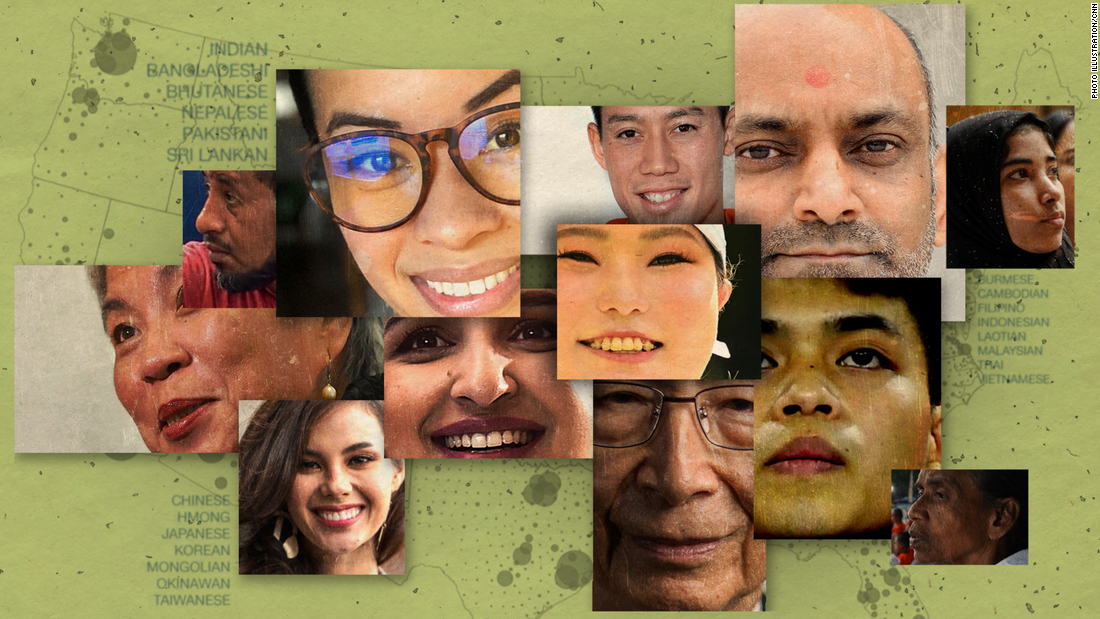

Here is a have a look at how numerous Asians in The united states are and why we will’t talk about them as a unmarried block.
An estimated 22 million Asian American citizens reside in the United States, making up just about 7% of the whole inhabitants, US Census information presentations. Those that self-identify as Chinese language, Indian or Filipino ancestry make up the 3 biggest Asian teams in the United States, however no person ethnicity makes up a majority.
For many years, Asians have been grouped in conjunction with Pacific Islanders through executive officers and advocates. Lately, there may be an estimated 1.6 million Pacific Islanders residing in the United States, together with many that name as Local Hawaiian, Samoan and Guamanian or Chamorro.
A couple of 3rd of Asians in the United States reside in California
Maximum Asians reside round large towns in 4 states — California, New York, Texas and Hawaii — however for essentially the most section, those towns aren’t house to a unmarried ethnic staff.
A couple of 3rd of all Asians in the United States reside in California, the place there is a huge Chinese language inhabitants in Los Angeles County at the side of Filipino, Korean, Jap and Indian communities. In the meantime, the Asians in Texas are Indian, Vietnamese, Chinese language, Filipino, Korean and Pakistani.
The Asian diaspora around the nation is as numerous as the explanations that led other people emigrate to the United States.
There are roughly 309,000 Hmong other people in the United States. The biggest proportion is in Wisconsin and Minnesota, the place many settled as refugees within the Seventies.
In southern states like Louisiana and Mississippi, Vietnamese other people make up the most important proportion of the Asian inhabitants. They resettled within the space following the Vietnam Struggle.
They have got the best revenue divide amongst racial and ethnic teams
Economically, Asian American citizens are essentially the most divided racial or ethnic staff in the United States, a Pew Analysis find out about discovered. Prime-income Asian American citizens close to the highest of the revenue ladder earn 10.7 instances up to the ones at the reverse finish of the revenue spectrum.
The best incomes Asians amongst the ones with a school stage and over 25 years outdated are Indian and Taiwanese, with an average family revenue of greater than $100,000 in line with 12 months. In the meantime, the median family revenue for Burmese and Nepalese other people is underneath $46,000 and $63,000, respectively.
Dinh mentioned the revenue disparities are pushed through a lot of components, together with how Asians arrived in the United States and the demanding situations that already existed within the communities the place they settled.
“People like my oldsters who left as each other people from Vietnam, left with not anything greater than the shirts on their again in order that nowadays I might be loose as opposed to any individual who could be from any other nation who immigrated with a grasp’s stage for their very own nations,” Dinh mentioned.
They’re key avid gamers within the immigration debate
Whilst some Asian American citizens had been in the United States for generations, others have come through the years underneath other instances, together with refugees and asylees.
Asians include a good portion of immigrants in the United States however they’re continuously overpassed within the debate over immigration reform. Of the greater than 11 million undocumented immigrants in the United States, 1.5 million individuals are from Asia, in line with the Migration Coverage Institute. That is about 13% of the whole undocumented inhabitants in the United States.
They hang about 3% of seats in Congress
Asian American citizens are most commonly underrepresented in elected administrative center throughout the United States, in spite of having some positive factors lately.
“There are lots of extra contributors of Congress than when I used to be a child. We have now the primary AAPI Vice President within the historical past of our nation in Kamala Harris however nonetheless our voice isn’t enough and in some ways Asian American citizens are nonetheless invisible in our public existence,” Tong instructed CNN.
AAPI elected officers, Tong says, are dedicated to serve although they continuously face stereotypes and are a few of the few other people of colour within the room.
“Other folks nonetheless have a difficult time seeing and conceiving Asian American citizens and Pacific Islanders as excellent elected officers,” he mentioned.
